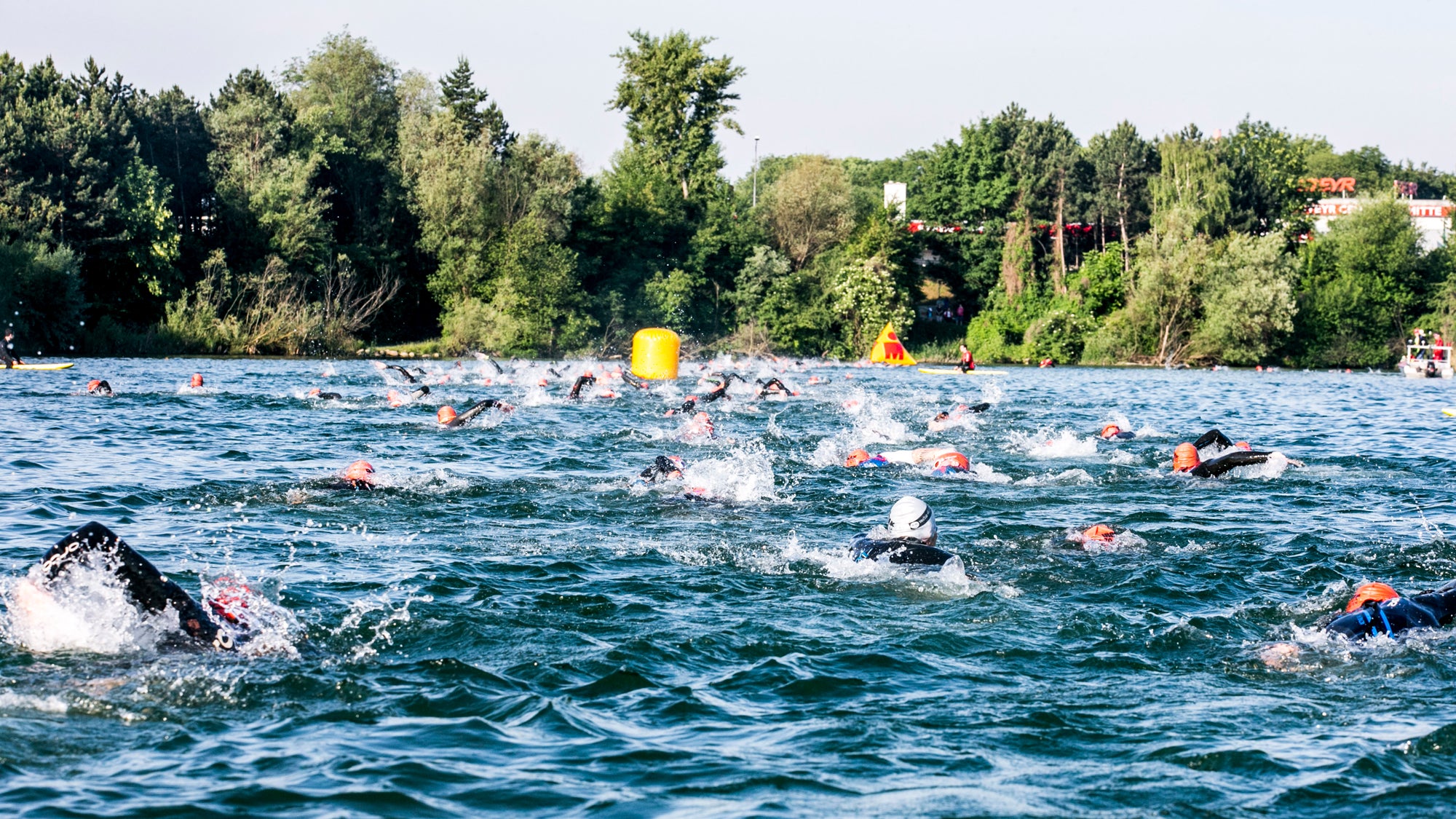Open Water Swimming Fear: How to Overcome It

Peyton Young was two minutes into her first open-water swim when the panic set in. The 43-year-old had just begun an Olympic-distance triathlon when she began gasping for air, frantically pulling at her wetsuit, which suddenly felt way too tight around her neck. “Not being able to see in the water was disorienting,” the Vienna, Virginia, resident recalls. “Plus, the adrenaline from the start of the race led to shortness of breath that made me feel panicky.”
While Young was eventually able to finish that swim (“with a lot of breaks,” she adds), it took practice, patience, and plenty of moments of panic before she figured out how to be more comfortable racing in open water.
Gerry Rodrigues, founder of the Tower26 swim group in Los Angeles and an open-water swim coach who has worked with top pros like Lionel Sanders and Holly Lawrence, says swim confidence all starts with practicing specific protocols in the pool. Here, Rodrigues outlines a plan to nix that open water swimming fear for good.
Warm-Up Right
Rodrigues says a swim warm-up should be just as tantamount to triathletes as setting up your transition area or checking the air in your tires. He has his swimmers run through a specific, process-driven warm-up (see below) during at least one training session per week, so that on race day, getting in and executing it is a no-brainer.
Sight Often
Sighting is key for keeping on course and staving off disorientation. But if you only do it in a race, it may throw off your stroke–or cause stiffness in your neck that can hamper you on the bike and run. Plus, practicing popping your head up will get you used to a rhythm you can tap into on race day. “We build sighting into every training session,” says Rodrigues. “In the pool, ideally, you want to sight twice every 25 meters.”
Bunch Up
To prep for the intimacy of open-water swims, Rodrigues crams three or four swimmers in one lane and has them take off together for sets of 25 meters at race speed. “No one is comfortable swimming with someone else so close to them. This simulates contact and gets you used to swimming in crowded quarters.”
Prepare for Takeoff
Rodrigues says practicing take-out speed can get your body—and mind—ready for race day. “Race nerves usually make you go out much faster than you would in practice,” leading to feelings of exhaustion, nausea, and shortness of breath early in the swim, says Rodrigues. He preps his swimmers for a quick start with sets of three-minute efforts where the first 50 seconds of the set are at top speed before settling into race pace.
Above all, Rodrigues says consistency can keep you in control of your swim-related worries. “Anxiety generally comes from a lack of familiarity,” he says. “So have a plan and execute it frequently in practice. Once you do it enough times, you’ll fear less and be much more con dent in open water.”
Tower26 Race Day Warm-Up
Counting your strokes offers a dose of distraction that can take your mind off pre-race anxiety and open water swimming fear, says Rodrigues. Try this 15-minute warm-up before your next race.
- 5 minutes easy swimming
- 5 minutes alternating between: 30 easy strokes, 30 fast strokes, 25 easy, 25 fast, 20 easy, 20 fast, 15 easy, 15 fast, 10 easy, 10 fast, 5 easy, 5 fast.
- 5 minutes alternating between: 5 easy strokes, 5 fast strokes, 10 easy, 10 fast, 15 easy, 15 fast, 20 easy, 20 fast, 25 easy, 25 fast, 30 easy, 30 fast.